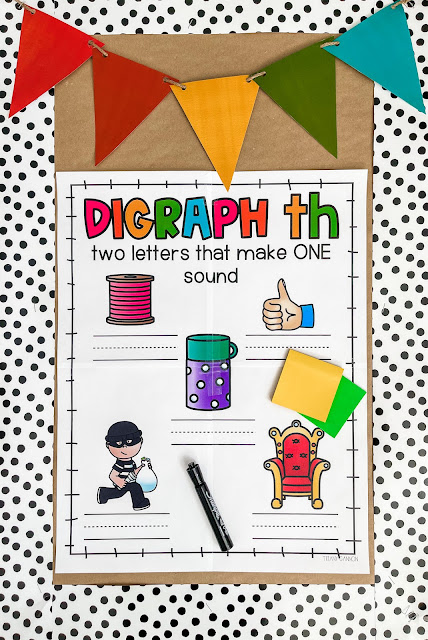Over the years, phonics has become one of my favorite subjects to teach. I have seen from experience how vital phonics instruction is and the impact it has on students' reading abilities. The more spelling patterns are introduced to students, the more words they are able to decode within text. By the end of first grade, you can see so much growth! That's probably why first grade ended up being my favorite grade to teach. In this post, I thought I would do a round up of my favorite phonics tools and resources that I have come to love over the years. These are things I have used in whole group instruction, small group instruction, and at centers. These are all supplemental materials and tools that I used in addition to our phonics curriculum when we had one. The first school I was at used Saxon Phonics, and the other school did not have a phonics curriculum. We had to supplement much more in that case.
Interactive Phonics Anchor Charts
I know I have talked about these a thousand times, but I just LOVE anchor charts. Anchor charts are most beneficial when they are interactive and created WITH students. I have the bones of the anchor chart already created, but students help me encode the words to match the pictures on the chart. They even come up and write them for us. These are just a great starting point for introducing a new spelling pattern.
Phonics Posters
We typically introduce one spelling pattern per week. Of course that might contain several spelling patterns within one syllable type. It just depends on the scope and sequence. I like to print posters containing those spelling patterns to display on our boards for that week. Afterwards, I move them to the phonics center/word work area. I just find it helpful for students to have the posters with pictures to reference during the unit.
You can print the rainbow option ones or the ones that have the vowels as red and the consonants blue.
Student Tools
I have used all kinds of tools over the years, but these are a few favorites. These tools allow hands-on practice when encoding and decoding words. They are also helpful in making your phonics more engaging for students.
Phoneme grapheme mapping is a SUPER important skill to practice. The book, Phonics and Spelling Through Phoneme Grapheme Mapping, was very helpful in teaching me the correct way to map the sounds as students encode. (You might can find it somewhere else cheaper.) I made this printable to go inside a dry erase pouch. We used these ALL THE TIME. We not only practiced phonics dictation with them, but we also did sentence dictation at the end.
Phonics Centers
Phonics Games for First Grades
Roll and Read Fluency Sentences
Storage
Organization is key when it comes to managing your materials for phonics. Once I make everything, I store for the following years to save time in the future. I used to use my filing cabinet to store everything, but that became disastrous...if you know me, you know I am a drawer stuffer. So, I got these filing storage boxes. They look nice and help me see everything I have. I sort everything in file folders by spelling pattern. I put my posters, student practice pages, and other single page activities in the folders.
I store my games in these clear boxes. I organize by syllable types in these. I put student games and activities inside each box that we can use at teacher table and at centers. I will use these activities as early finishers at centers, which is great because students already know how to play them. It makes it so easy for me to find an activity that I can use at small groups or centers that fit what that group needs.
All month on the blog, we are going to be discussing phonics instruction and practices. Up next, I will show you how we assessed phonics skills using phonics and sentence dictation assessments. We will also cover the components of a good phonics lesson, and we will go into more detail on setting up an engaging and effective phonics center. Thanks, as always, for stopping by!

























No comments
Post a Comment
Note: Only a member of this blog may post a comment.